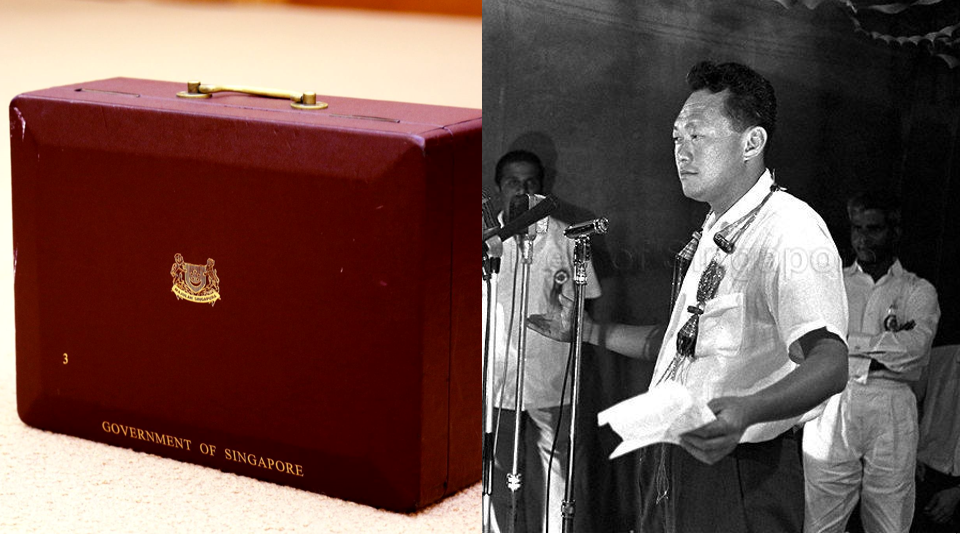Heng Swee Keat worked with Lee Kuan Yew from 1997 to 2000 as his Principal Private Secretary.
In 2014, Changi Airport Chairman Liew Mun Leong approached Heng to contribute an essay for a book, Up Close with Lee Kuan Yew.
The book aimed to showcase a more personal, intimate perspective of then-Minister Mentor Lee Kuan Yew by people who worked and interacted very closely with him.
His essay,"Mr Lee's Red Box" is reproduced in full here:
Mr Lee's Red Box
By Heng Swee Keat
Mr Lee Kuan Yew had a red box.
When I worked as Mr Lee’s Principal Private Secretary, or PPS, a good part of my daily life revolved around the red box. Before Mr Lee came in to work each day, the locked red box would arrive first, at about 9am.
As far as the various officers who have worked with Mr Lee can remember, he had it for many, many years.
It is a large, boxy briefcase, about fourteen centimetres wide.
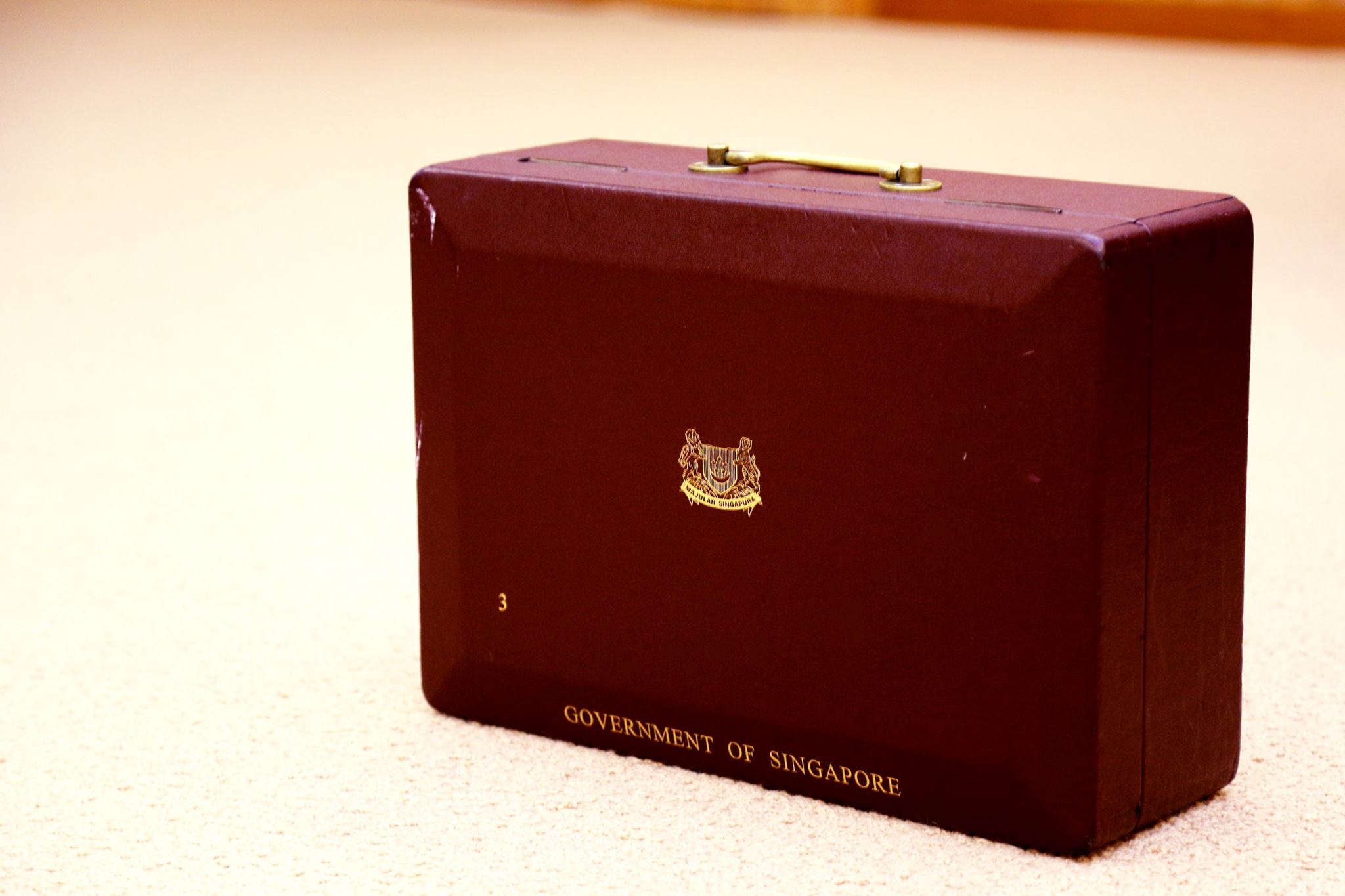 Photo by MCI.
Photo by MCI.
Red boxes came from the British government, whose ministers used them for transporting documents between government offices. Our early ministers had red boxes, but Mr Lee is the only one I know who used his consistently through the years.
When I started working for Mr Lee in 1997, it was the first time I saw a red box in use. It is called the red box but is more a deep wine colour, like the seats in the chamber in Parliament House.
Papers, cassette tapes, questions about trees, instructions for Istana staff
This red box held what Mr Lee was working on at any one time.
Through the years, it held his papers, speech drafts, letters, readings, and a whole range of questions, reflections, and observations.
For example, in the years that Mr Lee was working on his memoirs, the red box carried the multiple early drafts back and forth between his home and the office, scribbled over with his and Mrs Lee’s notes.
For a long time, other regular items in Mr Lee’s red box were the cassette tapes that held his dictated instructions and thoughts for later transcription. Some years back, he changed to using a digital recorder.
The red box carried a wide range of items.
It could be communications with foreign leaders, observations about the financial crisis, instructions for the Istana grounds staff, or even questions about some trees he had seen on the expressway.
Mr Lee was well-known for keeping extremely alert to everything he saw and heard around him – when he noticed something wrong, like an ailing rain tree, a note in the red box would follow.
Keeping up with LKY
We could never anticipate what Mr Lee would raise – it could be anything that was happening in Singapore or the world.
But we could be sure of this: it would always be about how events could affect Singapore and Singaporeans, and how we had to stay a step ahead. Inside the red box was always something about how we could create a better life for all.
We would get to work right away. Mr Lee’s secretaries would transcribe his dictated notes, while I followed up on instructions that required coordination across multiple government agencies.
Our aim was to do as much as we could by the time Mr Lee came into the office later. While we did this, Mr Lee would be working from home.
For example, during the time that I worked with him (1997-2000), the Asian Financial Crisis ravaged many economies in our region and unleashed political changes. It was a tense period as no one could tell how events would unfold.
Often, I would get a call from him to check certain facts or arrange meetings with financial experts.
A day in the working life of LKY
In the years that I worked for him, Mr Lee’s daily breakfast was a bowl of dou hua (soft beancurd), with no syrup. It was picked up and brought home in a tiffin carrier every morning, from a food centre near Mr Lee’s home.
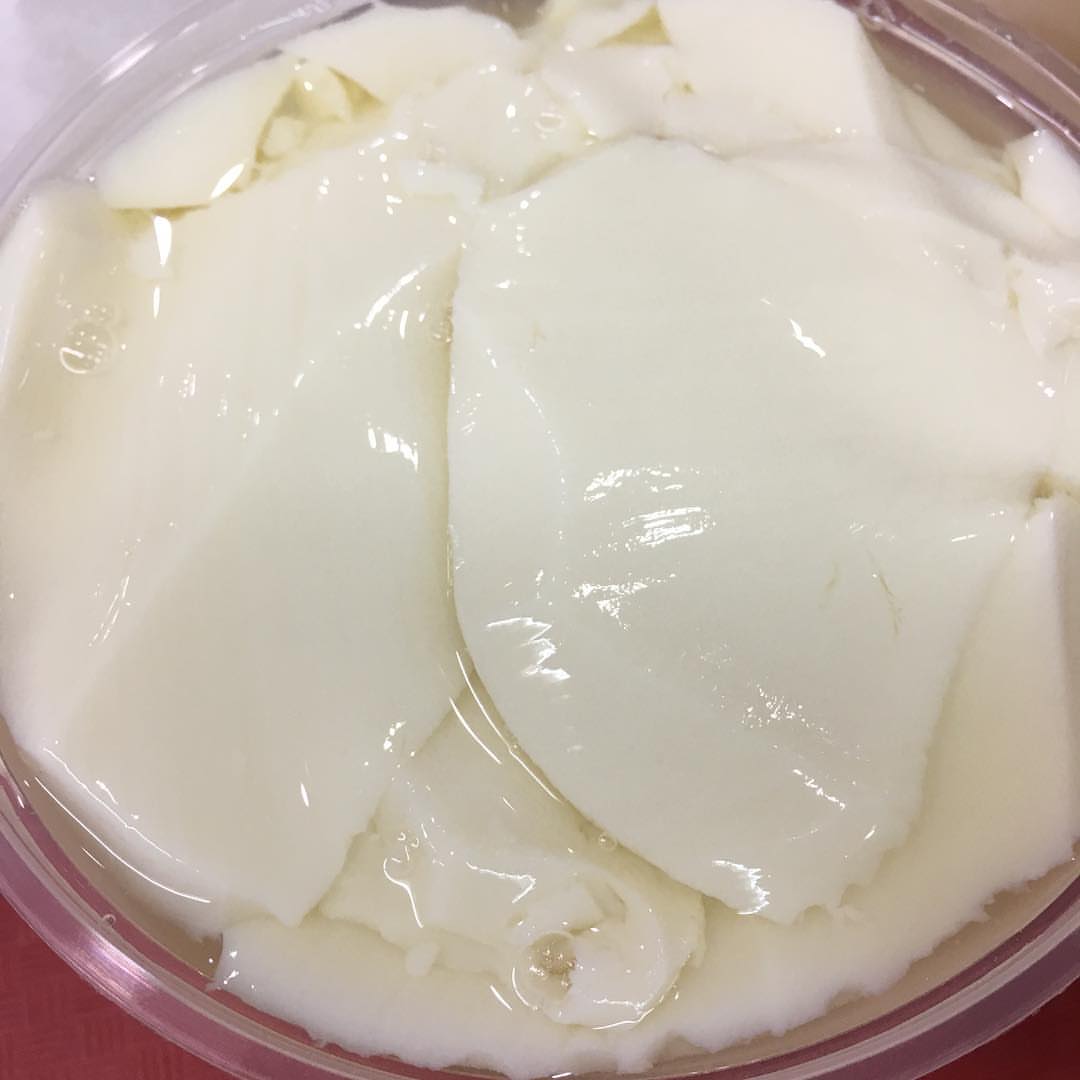 Visual representation of tauhway. Photo by jacksonhan23
Visual representation of tauhway. Photo by jacksonhan23
He washed it down with room-temperature water. Mr Lee did not take coffee or tea at breakfast.
When Mr Lee came into the office, the work that had come earlier in the red box would be ready for his review, and he would have a further set of instructions for our action.
From that point on, the work day would run its normal course. Mr Lee read the documents and papers, cleared his emails, and received official calls by visitors.
I was privileged to sit in for every meeting he conducted. He would later ask me what I thought of the meetings – it made me very attentive to every word that was said, and I learnt much from Mr Lee.
Exercise time meant red box time
Evening was Mr Lee’s exercise time.
Mr Lee has described his extensive and disciplined exercise regime elsewhere. It included the treadmill, rowing, swimming and walking – with his ears peeled to the evening news or his Mandarin practice tapes.
He would sometimes take phone calls while exercising.
He was in his 70s then.
In more recent years, being less stable on his feet, Mr Lee had a simpler exercise regime. But he continued to exercise.
Since retiring from the Minister Mentor position in 2011, Mr Lee was more relaxed during his exercises. Instead of listening intently to the news or taking phone calls, he shared his personal stories and joked with his staff.
While Mr Lee exercised, those of us in the office would use that time to focus once again on the red box, to get ready all the day’s work for Mr Lee to take home with him in the evening.
Based on the day’s events and instructions, I tried to get ready the materials that Mr Lee might need. It sometimes took longer than I expected, and occasionally, I had to ask the security officer to come back for the red box later.
Hanging with the late Mrs Lee, and that "old man bicycle"
While Mrs Lee was still alive, she used to drop by the Istana at the end of the day, in order to catch a few minutes together with Mr Lee, just to sit and look at the Istana trees that they both loved.
They chatted about what many other old couples would talk about. They discussed what they should have for dinner, or how their grandchildren were doing.
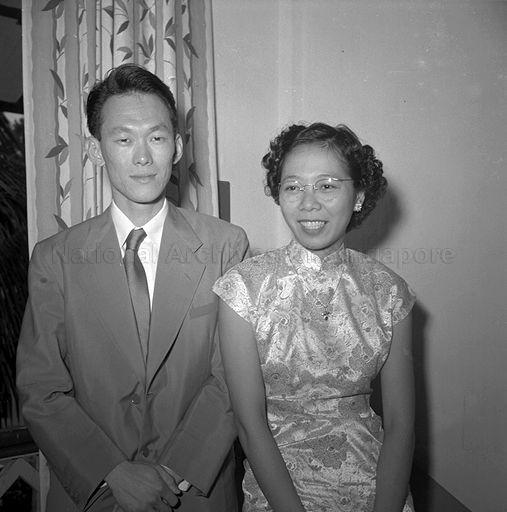 Lee Kuan Yew & Kwa Geok Choo (1950). Photo from NAS.
Lee Kuan Yew & Kwa Geok Choo (1950). Photo from NAS.
Then back home went Mr Lee, Mrs Lee and the red box.
After dinner, Mr and Mrs Lee liked to take a long stroll. In his days as Prime Minister, while Mrs Lee strolled, Mr Lee liked to ride a bicycle.
It was, in the words of those who saw it, “one of those old man bicycles”. None of us who have worked at the Istana can remember him ever changing his bicycle.
He did not use it in his later years, as he became frail, but I believe the “old man bicycle” is still around somewhere.
As Prime Minister, slept at 3:30am. As SM & MM, 2+am.
After his dinner and evening stroll, Mr Lee would get back to his work. That was when he opened the red box and worked his way through what we had put into it in the office.
Mr Lee’s study is converted out of his son’s old bedroom.
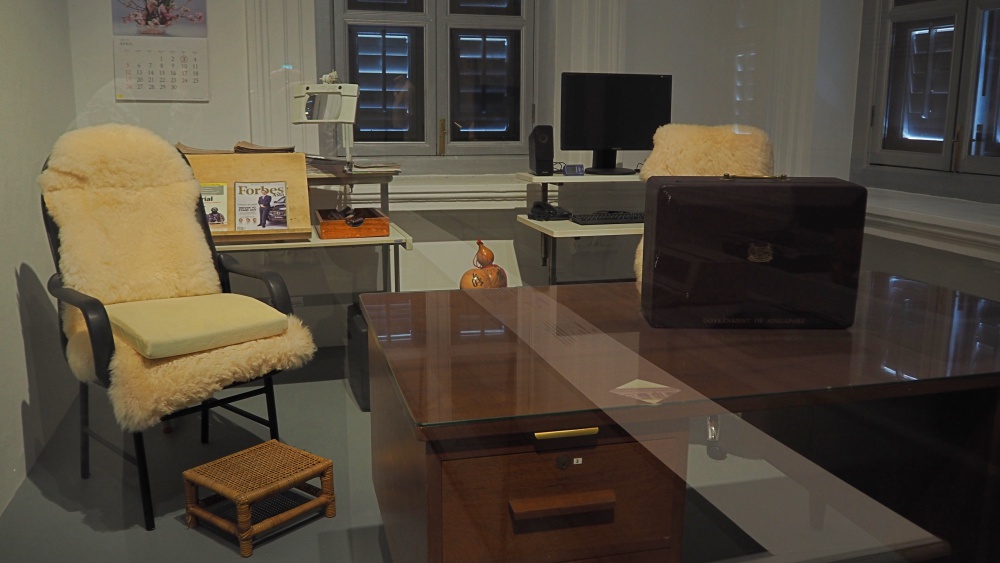 Replica of LKY's study. Photo by Tan Guan Zhen
Replica of LKY's study. Photo by Tan Guan Zhen
His work table is a simple, old wooden table with a piece of clear glass placed over it. Slipped under the glass are family memorabilia, including a picture of our current PM from his National Service days.
When Mrs Lee was around, she stayed up reading while Mr Lee worked. They liked to put on classical music while they stayed up.
In his days as PM, Mr Lee’s average bedtime was three-thirty in the morning.
As Senior Minister and Minister Mentor, he went to sleep after two in the morning. If he had to travel for an official visit the next day, he might go to bed at one or two in the morning.
Deep into the night, while the rest of Singapore slept, it was common for Mr Lee to be in full work mode.
Before he went to bed, Mr Lee would put everything he had completed back in the red box, with clear pointers on what he wished for us to do in the office.
The last thing he did each day was to place the red box outside his study room.
The next morning, the duty security team picked up the red box, brought it to us waiting in the office, and a new day would begin.
Let me share two other stories involving the red box.
Asked to continue work after coming to, aged 72
In 1996, Mr Lee underwent balloon angioplasty to insert a stent. It was his second heart operation in two months, after an earlier operation to widen a coronary artery did not work.
After the operation, he was put in the Intensive Care Unit for observation.
When he regained consciousness and could sit up in bed, he asked for his security team. The security officer hurried into the room to find out what was needed.
Mr Lee asked, “Can you pass me the red box?”
Even at that point, Mr Lee’s first thought was to continue working.
The security officer rushed the red box in, and Mr Lee asked to be left to his work. The nurses told the security team that other patients of his age, in Mr Lee’s condition, would just rest.
Mr Lee was 72 at the time.
Thinking about work even while mourning wife's passing
In 2010, Mr Lee was hospitalised again, this time for a chest infection. While he was in the hospital, Mrs Lee passed away.
Mr Lee has spoken about his grief at Mrs Lee’s passing. As soon as he could, he left the hospital to attend the wake at Sri Temasek.
At the end of the night, he was under doctor’s orders to return to the hospital. But he asked his security team if they could take him to the Singapore River instead.
It was late in the night, and Mr Lee was in mourning. His security team hastened to give a bereaved husband a quiet moment to himself.
As Mr Lee walked slowly along the bank of the Singapore River, the way he and Mrs Lee sometimes did when she was still alive, he paused.
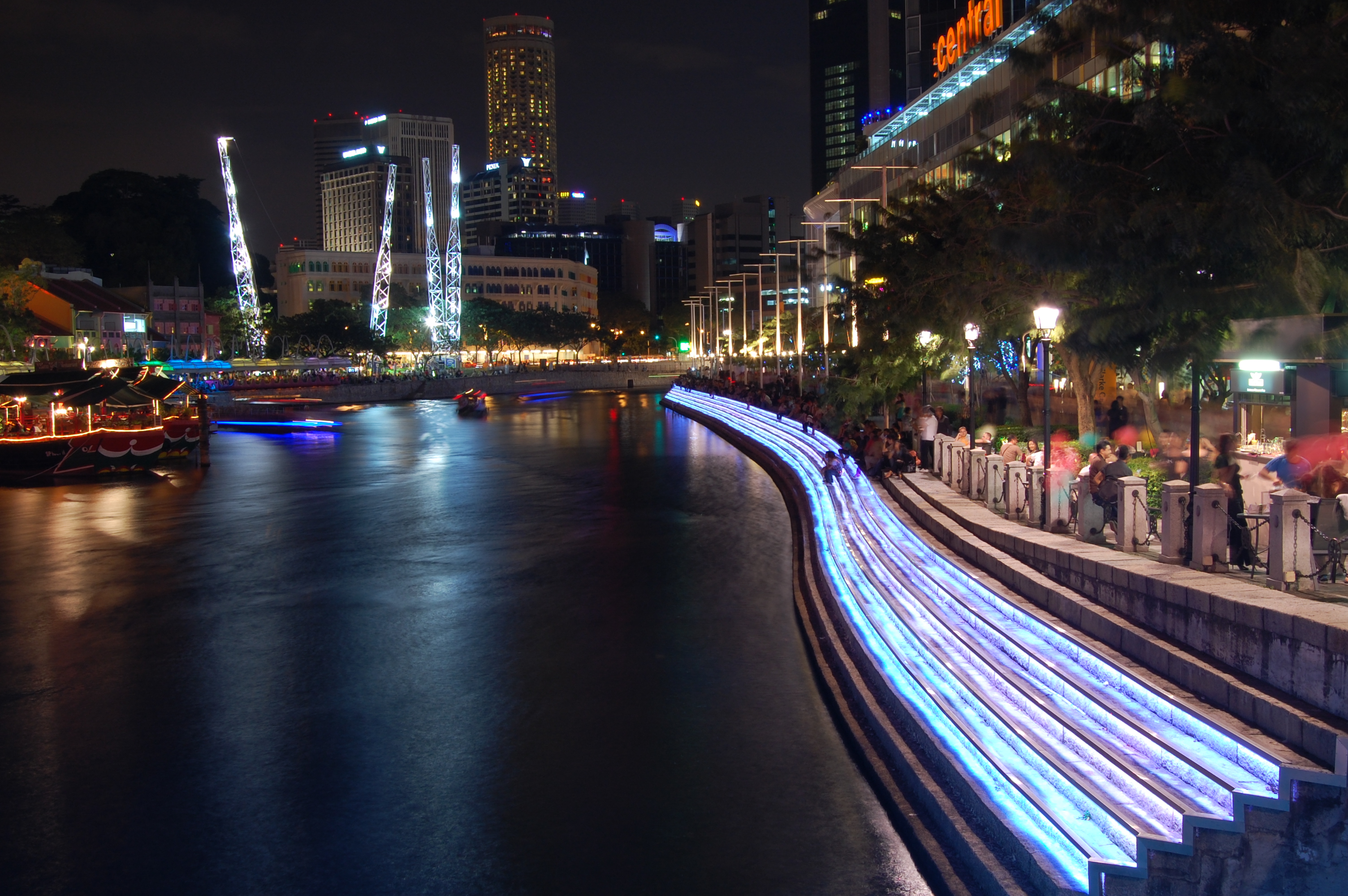 Photo Singapore River, via Wikimedia.
Photo Singapore River, via Wikimedia.
He beckoned a security officer over. Then he pointed out some trash floating on the river, and asked, “Can you take a photo of that? I’ll tell my PPS what to do about it tomorrow.”
Photo taken, he returned to the hospital.
I was no longer Mr Lee’s PPS at the time. I had moved on to the Monetary Authority of Singapore, to continue with the work to strengthen our financial regulatory system that Mr Lee had started in the late 1990s.
But I can guess that Mr Lee probably had some feedback on keeping the Singapore River clean. I can also guess that the picture and the instructions were ferried in Mr Lee’s red box the next morning to the office.
Even as Mr Lee lay in the hospital. Even as Mrs Lee lay in state.
The security officers with Mr Lee were deeply touched. When I heard about these moments, I was also moved.
Red box is LKY's dedication to S'pore
I have taken some time to describe Mr Lee’s red box.
The reason is that, for me, it symbolises Mr Lee’s unwavering dedication to Singapore so well.
The diverse contents it held tell us much about the breadth of Mr Lee’s concerns — from the very big to the very small; the daily routine of the red box tells us how Mr Lee’s life revolved around making Singapore better, in ways big and small.
By the time I served Mr Lee, he was the Senior Minister. Yet he continued to devote all his time to thinking about the future of Singapore.
I could only imagine what he was like as Prime Minister.
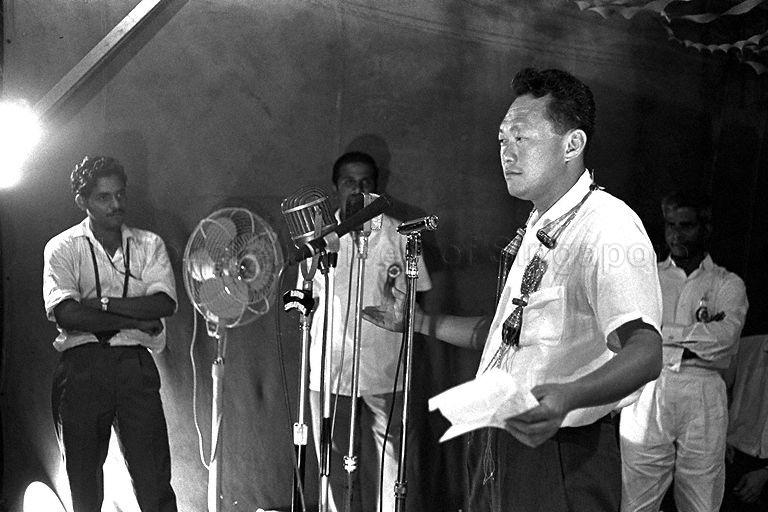 LKY delivering a speech, 1963. Photo from NAS.
LKY delivering a speech, 1963. Photo from NAS.
In policy and strategy terms, he was always driving himself, me, and all our colleagues to think about what each trend and development meant for Singapore, and how we should respond to it in order to secure Singapore’s wellbeing and success.
As his PPS, I saw the punishing pace of work that Mr Lee set himself. I had a boss whose every thought and every action was for Singapore.
But it takes private moments like these to bring home just how entirely Mr Lee devoted his life to Singapore.
In fact, I think the best description comes from the security officer who was with Mr Lee both of those times. He was on Mr Lee’s team for almost 30 years. He said of Mr Lee: “Mr Lee is always country, country, country. And country.”
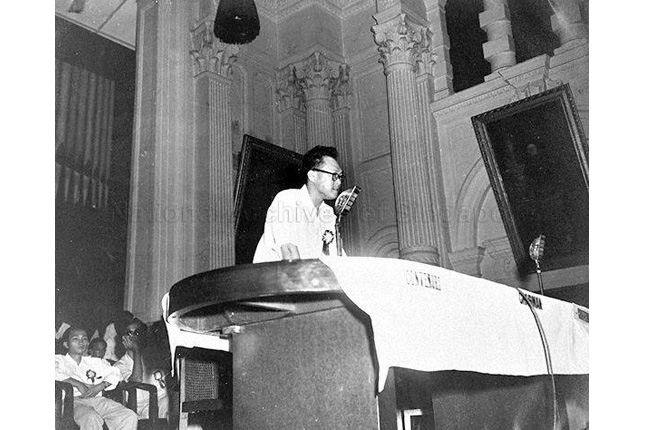 Photo via roots.sg.
Photo via roots.sg.
This year, Singapore turns 50. Mr Lee would have turned 92 this September.
Mr Lee entered the hospital on 5 February 2015. He continued to use his red box every day until 4 February 2015.
(The essay was originally published on March 24 2015).
Top photo composite image, photos from MCI and NAS.
If you like what you read, follow us on Facebook, Instagram, Twitter and Telegram to get the latest updates.
